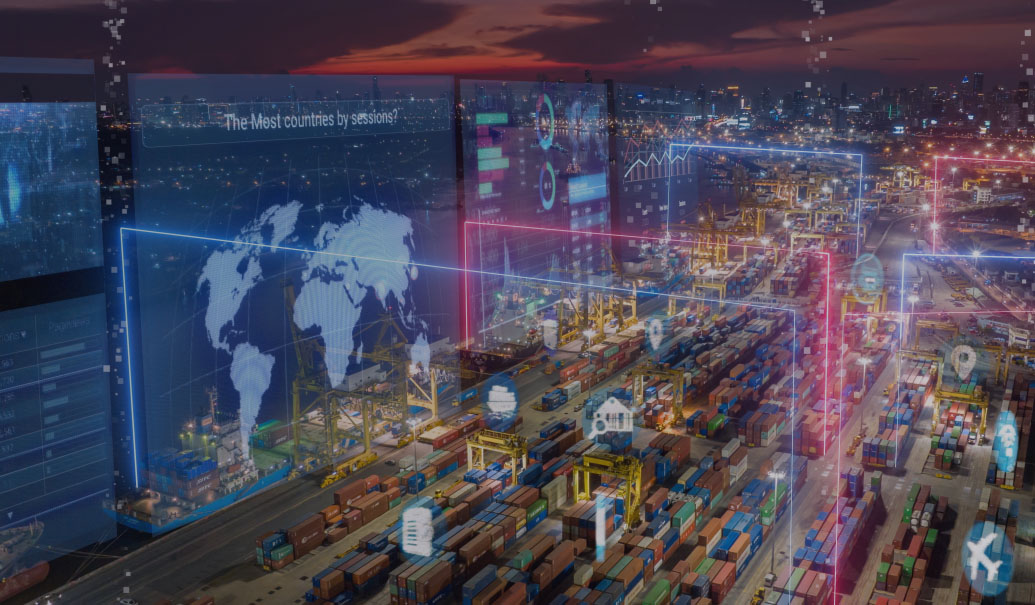Advances in data management, technology and automation have helped organizations keep a constant pulse on their businesses. Even the most effective business tools or strategies will not work, however, without a well-functioning supply chain.
The 6 ‘rights’ of the supply chain
Supply chains are inherently complex, and ever-changing market dynamics only continue to increase this complexity. Disruptions in the supply chain have caused organizations to suffer severe losses in recent years. The widespread impacts from these disruptions have affected employees, the community, the economy and, more obviously, the consumers—the only node in the supply chain where revenue is generated. To ensure smooth operations, organizations need to remain conscious of the 6Rs, or six “rights” of the supply chain: right product, right cost, right place, right time, right quality and right quantity. Keeping pace with all these “rights” is no easy task.
Why is a change needed now?
It’s critical to keep pace with these “rights.” Not only do they affect the operations of individual businesses, they also can have wide-reaching effects on the economy. According to U.S. Treasury Secretary Janet Yellen, supply chain disruptions were a factor driving higher inflation in the U.S. economy in 2022. As these disruptions began to mitigate in the second half of 2022, they helped reduce the country’s inflation levels.
Regardless of this positive trend in the U.S., there will always be major disruptions worldwide, such as COVID-19, the Suez Canal blockage of 2021, the 2022 Russian invasion of Ukraine and a host of natural disasters, all of which will continue to have a massive impact on supply chains. Even before the COVID-19 pandemic, organizations typically experienced one to two months of significant supply chain disruptions every few years. There are a number of reasons why it is imperative for organizations to future-proof their supply chains now.
- Customer demands and needs are changing rapidly. Amazon, for instance, initially offered delivery of an order within five to six days, which over time has improved to a one- to two-day or same-day delivery model. There are now startups that offer delivery in 10 minutes. Changes such as these have contributed to increases in customer expectations, and organizations need to up their games to retain and satisfy their customers.
- Outsourcing to Asia is no longer the most viable option for building a more resilient supply chain. To exercise more control over their supply chain operations and to keep a firm grip over their business functions, organizations need to be closer to their production units.
- Customers have many options to choose from. Online players have brought everything conceivable within reach of our fingertips, greatly expanding customers’ purchasing options. Suppliers and sellers sticking with the traditional retail supply chain model for e-commerce will struggle to survive in this competitive market.
- Customers are now much more community-oriented and socially responsible. Customers prefer organizations that help their communities flourish and that are environmentally friendly. Organizations need to pivot toward socially conscious business practices to cater to these demands.
How to future-proof your supply chain
Resilience, agility and sustainability are the pillars of a stronger and more advanced supply chain. Executives and supply chain management leaders need to unlearn, redesign, connect, listen and automate to future-proof their supply chains.
Unlearn the traditional operating mindset
Following the traditional operating mindset will hinder growth by acting as a roadblock to future success. Supply chain leaders need to unlearn old habits first to learn new ones.
Supply chains have traditionally operated with humans at the center. Decision-making is done reactively, and there is a heavy reliance on people to make the right decisions at the right time. With the market landscape in constant flux, what worked in the past may not work in the future.
Redesign supply chains and give them an end-to-end overhaul
Upgrading components of the supply chain one by one is insufficient; supply chains need end-to-end overhauls. Chief supply chain officers and their teams should constantly be tracking supply chain resiliency key performance indicators. Unless at least one decision-maker focuses on improving supply chain design in the long run, traditional habits and behaviors will continue to creep in and impede growth.
Organizations also need to re-strategize. The current approach is to manufacture standard and large-volume items in-house and to outsource more flexible and low-volume items. Flipping this model on its head—outsourcing standard production items and in-housing production of items that require more customization—will help organizations be more agile and retain more control over their supply chains. Leaders need not shy away from drastic supply chain design changes, such as moving various elements in the network around the globe.
Connect supply chain providers for success
A large part of supply chain success depends upon its suppliers. Organizations need to make sure that their suppliers are consistently cared for. Closeness is key, as it takes only the first domino to fall before the entire setup crashes down.
It’s also imperative to get closer to your suppliers. Many senior supply chain executives struggle to identify and track risks for their tier-one suppliers, particularly for those suppliers with multiple locations. Supplier risk management becomes even more challenging for second- and third-tier suppliers, and many disruptions originate in these deeper tiers. Understanding how these suppliers operate will help reduce disruptions. To that end, supplier data needs to be constantly updated and performance needs to be tracked to keep suppliers accountable. Developing deeper relationships with key suppliers is critical, especially those that remain loyal in times of trouble.
Listen to customers to be more agile
An important function in any business, listening to the customer allows an organization to be agile and to respond quickly to evolving customer needs. For instance, modern consumers are increasingly demanding more social responsibility from organizations. In response, organizations can redesign their supply chains to reduce negative impacts on the environment. Future supply chains will be built sustainably, and operating models will reflect other elements of customers’ demands.
Automate and trust artificial intelligence (AI)
An automation-first mindset is needed to become less reliant on human decision-making and to better adapt to changing market conditions.
The key to a successful future-proofed supply chain is integrated data used to make wise and timely decisions. AI is the newest player in this game. Supply chains can be faster, more resilient and more market-ready when they use AI in bounded controls, before graduating it to more autonomous functions. Predictive risk management is taking center stage. Traditionally, decision-makers required time to recognize, react to and ultimately mitigate supply chain risks. With the help of new technologies, the next evolution will be self-healing supply chains that allow human decision-makers to be proactive in mitigating risks upfront.
Strengthening supply chains for an increasingly unpredictable future
As the global business landscape continues to evolve, it is more important than ever to prepare your supply chain for the future. By taking proactive steps, you can build a supply chain that is resistant to disruption and capable of adapting to changing market conditions. Future-proofing your supply chain will ensure that your business is well-positioned to succeed in an increasingly unpredictable world.
Add insights to your inbox
We’ll send you content you’ll want to read – and put to use.
















